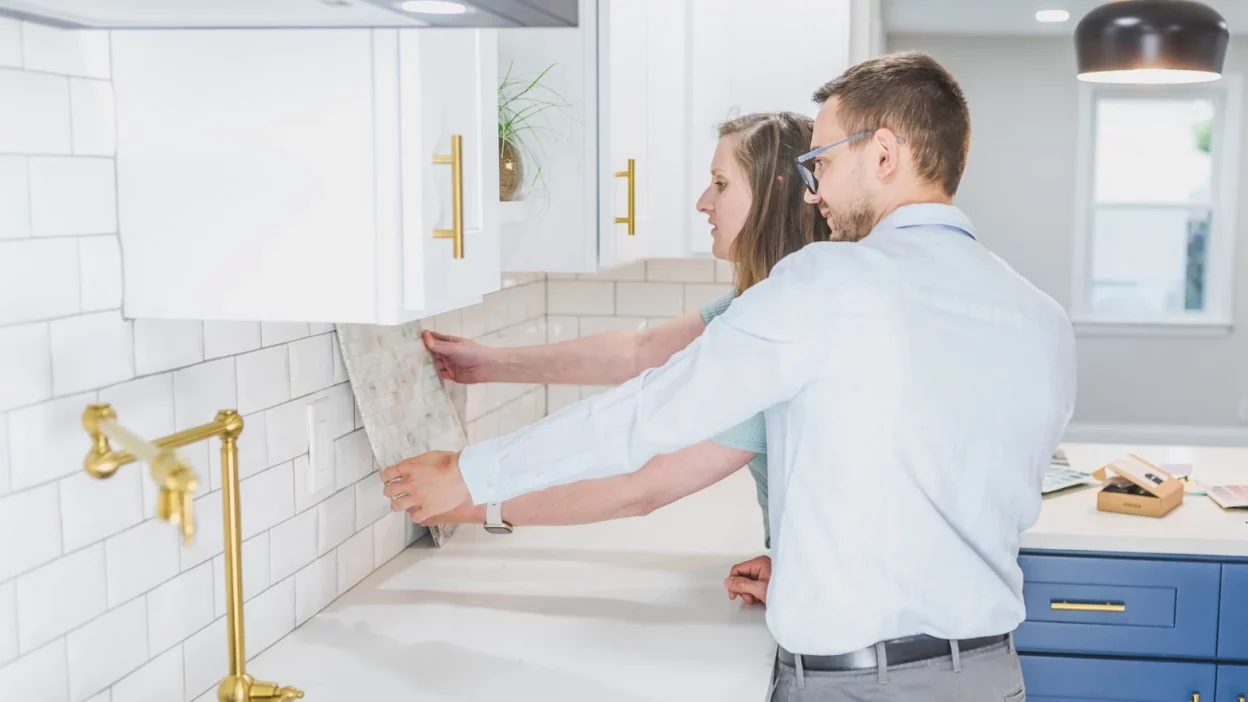Your kitchen’s backsplash does more than protect walls from splatters, it’s a design detail that can elevate your entire space. In fact, 86% of homeowners include a backsplash upgrade during kitchen renovations, making it one of the most popular features to refresh.
Whether you’re planning a full remodel or a simple update, the right tile can transform your kitchen. With factory sales offering up to 50% off, now is the perfect time to explore options, from timeless subway tiles to luxurious natural stone, there’s something for every style and budget.
Understanding Backsplash Fundamentals
Before diving into specific styles, it’s important to understand what makes a backsplash truly effective in your kitchen space. A backsplash serves as your kitchen’s first line of defense against moisture, grease, and food stains. Without proper protection, your walls can suffer permanent damage from daily cooking activities. The best kitchen backsplash combines durability with easy maintenance, ensuring your walls stay pristine for years to come.
Smart homeowners often explore modern kitchen backsplash ideas that blend contemporary aesthetics with practical functionality, creating spaces that feel both current and timeless.
Size and Layout Considerations
The standard backsplash extends from the countertop to the bottom of your upper cabinets, typically covering 15-18 inches of wall space. However, full-height backsplashes that reach the ceiling create dramatic visual impact and easier cleaning. Your kitchen’s layout determines the best approach, galley kitchens benefit from consistent patterns, while L-shaped spaces can handle more varied designs.
Consider how your backsplash will interact with windows, outlets, and other fixtures. These elements shouldn’t feel like afterthoughts but rather integrated parts of your overall design.
This foundation knowledge helps you make informed decisions when selecting materials and patterns for your project.
Essential Materials and Their Benefits
Different backsplash materials offer unique advantages, and understanding these differences helps you choose the right option for your lifestyle.
Ceramic and Porcelain Tiles
Ceramic tiles remain popular because they’re affordable, water-resistant, and available in countless styles. Porcelain tiles offer superior durability and lower water absorption, making them ideal for busy kitchens. Both materials clean easily with standard household cleaners and can mimic natural stone, wood, or fabric textures.
These tiles work well in both traditional and contemporary settings, adapting to your existing décor without overwhelming the space.
Natural Stone Options
Marble, granite, and travertine bring organic beauty to kitchen spaces, with unique veining and color variations that can’t be replicated artificially. Natural stone requires more maintenance than ceramic options, needing regular sealing to prevent stains and damage.
Despite the extra care required, many homeowners choose stone for its luxurious appearance and long-term value addition to their homes.
Glass and Metal Alternatives
Glass tiles reflect light beautifully, making small kitchens appear larger and brighter. They’re non-porous, stain-resistant, and available in countless colors and finishes. Metal tiles, particularly stainless steel and copper, create industrial or rustic looks while offering excellent durability.
These materials often cost more initially but can provide decades of trouble-free service when properly installed. The material you choose impacts both your daily kitchen experience and your home’s overall value.
Design Considerations That Matter
Successful backsplash design goes beyond just picking pretty tiles, it requires understanding how to choose backsplash elements that complement your entire kitchen.
Color Coordination Strategies
Your backsplash should harmonize with your countertops, cabinets, and flooring without competing for attention. Neutral colors provide timeless appeal and work with changing décor, while bold colors can serve as striking focal points. Consider your kitchen’s natural light when selecting colors, as north-facing kitchens benefit from warmer tones while south-facing spaces can handle cooler colors.
Remember that trendy colors might look dated in a few years, so balance personal preferences with long-term livability.
Pattern and Texture Choices
Subway tiles offer classic appeal, while herringbone and chevron patterns add visual interest without overwhelming smaller spaces. Mosaic tiles create intricate designs but require more maintenance due to increased grout lines. Textured tiles hide fingerprints and minor imperfections better than smooth surfaces.
Large format tiles minimize grout lines and create cleaner looks, while smaller tiles offer more design flexibility and easier repairs if damage occurs.
Grout Selection Impact
Grout color dramatically affects your backsplash’s final appearance. Matching grout creates seamless looks, while contrasting grout emphasizes tile patterns. Darker grout hides stains better than lighter options, though it might make spaces feel smaller.
Consider epoxy grout for areas around sinks and stoves, as it resists stains and moisture better than traditional cement-based options.
These design elements work together to create cohesive, functional kitchen spaces that reflect your personal style.
Installation and Maintenance Tips
Proper installation and ongoing care ensure your modern kitchen backsplash performs well and looks great for years to come.
Professional vs. DIY Installation
Simple subway tile installations might be suitable for experienced DIYers, but complex patterns, natural stone, or areas around electrical outlets typically require professional expertise. Poor installation can lead to water damage, uneven surfaces, and costly repairs later.
Professional installers have the tools and experience to handle challenging layouts, ensuring proper waterproofing and electrical safety compliance.
Daily Care and Long-term Maintenance
Regular cleaning prevents buildup of grease and food particles that can permanently stain your backsplash. Most tiles need only mild soap and water, though natural stone requires pH-neutral cleaners to avoid etching. Clean spills immediately, especially acidic substances like lemon juice or tomato sauce.
Inspect grout lines annually and reseal when necessary to maintain water resistance and prevent discoloration.
Repair and Replacement Considerations
Keep extra tiles from your installation for future repairs, as discontinued styles can be difficult to match later. Small chips in ceramic tiles can often be touched up with matching paint, while cracked tiles usually need complete replacement.
Address damage promptly to prevent water infiltration behind your backsplash, which can cause extensive and expensive problems. Proper maintenance protects your investment and keeps your kitchen looking fresh and clean.
Creating Your Perfect Kitchen Backsplash
The best kitchen backsplash balances your aesthetic preferences with practical needs, creating a space that’s both beautiful and functional. From selecting appropriate backsplash materials to understanding installation requirements, every decision contributes to your kitchen’s overall success. Whether you choose classic subway tiles or bold geometric patterns, your backsplash should reflect your personal style while serving your daily cooking needs.
Remember that trends come and go, but quality materials and thoughtful design choices create kitchens that feel fresh and current for decades. Your perfect backsplash is out there, it just takes careful consideration of your space, lifestyle, and long-term goals to find it.
Common Questions About Kitchen Backsplashes
1. What is the rule of thumb for backsplash?
As a general rule, a backsplash should be at least three inches above the countertop surface for optimal protection against spills and stains. The usual height for installation is four inches, giving your cooking area a polished and cohesive appearance.
2. How to choose the right backsplash material for your cooking style?
Heavy cooks need durable, easy-to-clean materials like porcelain or glass tiles that resist heat and stains. Light cooks can consider more decorative options like natural stone or intricate mosaics that might require gentler care.
3. Does backsplash need to match the countertop?
Your backsplash should complement, not necessarily match, your countertops. Coordinating colors and textures while maintaining some contrast creates more interesting and visually appealing kitchen designs than perfect matches.

Lexy Summer is a talented writer with a deep passion for the art of language and storytelling. With a background in editing and content creation, Lexy has honed her skills in crafting clear, engaging, and grammatically flawless writing.



